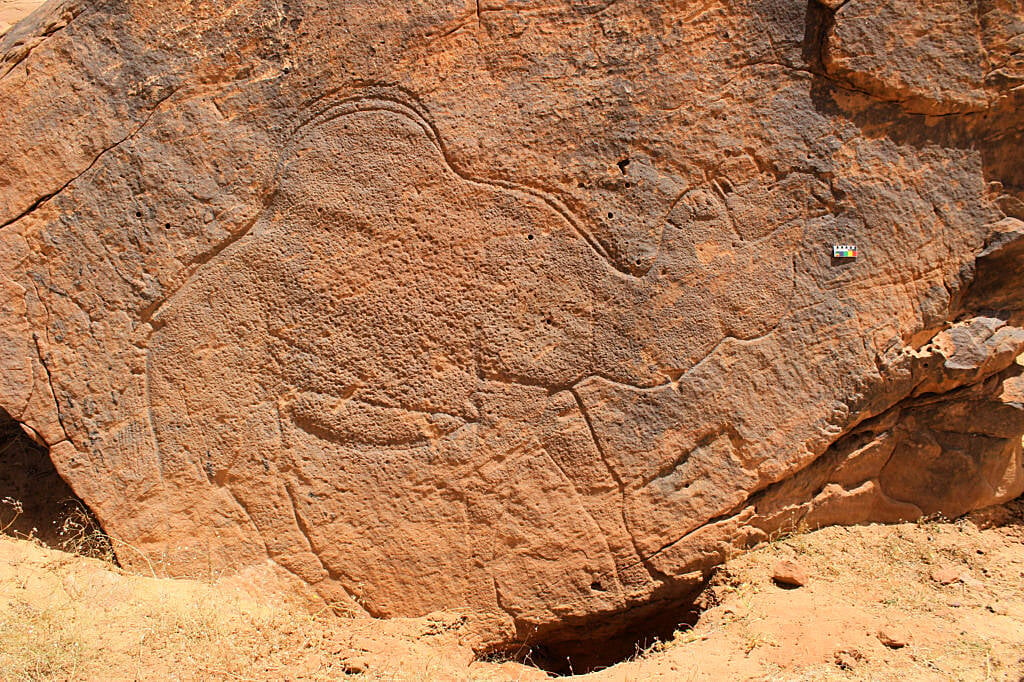Researchers have discovered life-size rock carvings of camels, gazelles, and other animals in the Saudi Arabian desert. These impressive carvings date back to about 12,000 years ago, with many measuring more than 6 feet (1.8 meters) tall.
Scientists believe the carvings were created using a wedge-shaped rock to produce sharp, precise lines. Interestingly, several of the engravings were etched onto narrow ledges, meaning the artists could not even step back to survey their work as they created it.
“To engrave that much detail with just a rock takes real skill,” said Maria Guagnin, an archaeologist with the Max Planck Institute of Geoanthropology in Germany, who was involved in the discovery.
The animal carvings, along with engraving tools found at the site, reveal that people inhabited the area about 2,000 years earlier than scientists had previously thought. However, it remains unclear how these early inhabitants survived in such arid conditions—whether they lived off shallow lakes that formed temporarily or drank water that collected in deep crevices.
“People have been creating rock art in Saudi Arabia for thousands of years,” Ms. Guagnin explained. However, dating older engravings can be challenging since they often lack writing and rarely contain remnants like charcoal, which can be analyzed in a lab.
Michael Harrower, a Johns Hopkins University archaeologist not involved in the research, commented via email, “We know relatively little about art in the Middle East during this very ancient period of the human past.”
In the latest discovery, scientists found a rock pick buried directly beneath the carvings. This crucial find allowed them to date both the tool and the artwork it was used to create. The findings were published recently in the journal *Nature Communications*.
Prior to this discovery, scientists were uncertain if people lived in the desert during this time, as the conditions were dry and water scarce. It was generally thought that people moved into the area later, when the landscape was marked by greener pastures and lakes.
One of the carvings depicted an auroch—an ancestor of wild cattle that did not live in the desert and has since become extinct. This led Ms. Guagnin to speculate that the artists might have encountered such animals by traveling elsewhere during the dry season.
“They must have been fully established communities that knew the landscape really well,” she said.
This discovery not only sheds light on human history in the harsh environments of the Arabian desert but also highlights the remarkable skill and adaptability of early communities in the region.
https://www.breakingnews.ie/world/12000-year-old-carvings-of-animals-discovered-in-saudi-arabian-desert-1813085.html
